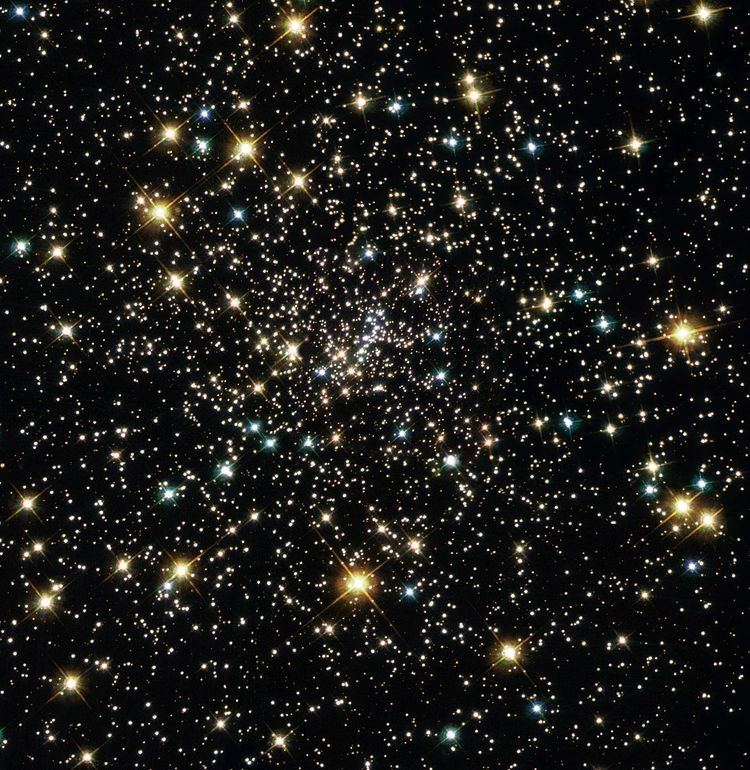Class IX Right ascension 17 40 42.09 Distance 7.2 kly (2.2 kpc) | Declination –53° 40′ 27.6″ Apparent magnitude (V) +6.68 | |
 | ||
NGC 6397, also known as Caldwell 86, is a globular cluster in the constellation Ara. It is located about 7,200 light-years from Earth, making it one of the two nearest globular clusters to Earth (the other one being Messier 4). The cluster contains around 400,000 stars, and can be seen with the naked eye under good observing conditions.
Contents
NGC 6397 is one of the at least 20 globular clusters of the Milky Way Galaxy that have undergone a core collapse, meaning that the core has contracted to a very dense stellar agglomeration.
Estimating the age of the Milky Way
In 2004, a team of astronomers focused on the cluster to estimate the age of the Milky Way Galaxy. The team consisted of Luca Pasquini, Piercarlo Bonifacio, Sofia Randich, Daniele Galli, and Raffaele G. Gratton. They used the UV-Visual Echelle Spectrograph of the Very Large Telescope at Cerro Paranal to measure the beryllium content of two stars in the cluster. This allowed them to deduce the time elapsed between the rise of the first generation of stars in the entire Galaxy and the first generation of stars in the cluster. This, added to the estimated age of the stars in the cluster, gives an estimate for the age for the Galaxy: about 13.6 billion years, which is nearly as old as the universe itself.
Lower mass limit for stars
In 2006, a study of NGC6397 using the Hubble Space Telescope was published that showed a clear lower limit in the brightness of the cluster's population of faint stars. The authors deduce that this indicates a lower limit for the mass necessary for stars to develop a core capable of fusion: roughly 0.083 times the mass of the Sun.
